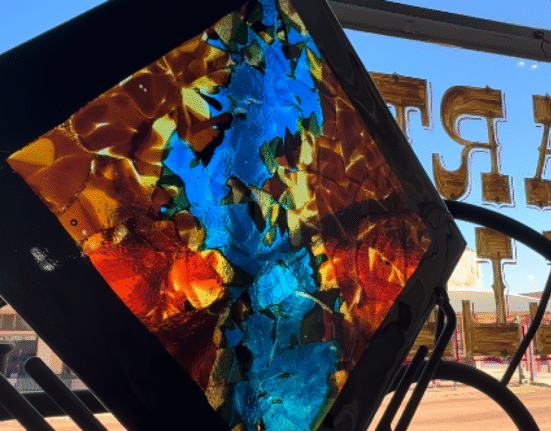On Saturday, a new exhibit from the Balloon Museum project opened at San Francisco’s Palace of Fine Arts. “EmotionAir: Art You Can Feel” fills the Palace with large-scale installations, centered around inflatables. And true to the exhibit’s name, visitors are invited to reach out and touch many of the exhibit’s array of larger-than-life inflatables.
Those pieces include MOTOREFISICO’s “Swing,” which is sort of like an omnidirectional Newton’s cradle, with yard-wide balloon spheres substituting for metal balls. There’s Miranda Makaroff’s “Synchronized Chaos,” a hallway lined with inflatable 6-foot-tall heads. Walking through Alex Schweder’s “Aeroton” is sort of like passing through a sea anemone surrounded by rising and falling inflatable columns.
“Everything is related to an invitation to come back to our personal child,” Francesco Dobrovich, one of the curators, explained during a tour on Friday.
Founded in 2020, the Balloon Museum curates exhibitions of air-based artworks. Currently, the museum has other temporary exhibits in Los Angeles, Rome and Berlin. The San Francisco exhibition is the first “EmotionAir” showing in the US. Tickets cost from up to $54.
The central theme of EmotionAir’s pitch — “an unprecedented sensory journey that explores the connection between art and emotion,” per a news release — comes across as a bit trite. Still, by virtue of their size alone, the immersive artworks inspire awe. Karina Smigla-Bobinski’s “ADA” (named for the mathematician Ada Lovelace) is an inflatable sphere covered in sticks of charcoal. Think of it as a see-through beach ball, scaled to the size of an Indiana Jones boulder. Filled with a mixture of air and helium, the artwork is light enough to float, but heavy enough to fall. Visitors are encouraged to bounce it against the room’s white walls and ceiling, where its charcoal spokes leave behind elegant black streaks. In a tour of the exhibit, Smigla-Bobinski said she expects the walls to turn completely black by the end of the “EmotionAir” exhibit’s San Francisco run.
In another room, you can see “Somehow I Don’t Feel Comfortable” by artist Momoyo Torimitsu. The artwork consists of two hot-pink cartoon bunnies, each inflated to the size of a T. rex, pressing against an oppressively low ceiling. Some of the exhibit’s other larger-than-life inflatables, like “ADA,” use their size to create a free-wheeling sense of play. The bunnies’ cramped conditions flip the theme on its head.
San Francisco is a fitting stop for the Balloon Museum. The city is the original home of Burning Man, and where many of the desert festival’s gigantic sculptures come home to roost. Like towering Burning Man statues, many of the “EmotionAir” artworks draw power from their sheer size. These are the sort of spectacles that translate well into Instagram reels; many of the pieces here seem to blur the line between “art” and “experience.”
But regardless of how audiences respond to the inflatable artworks, the intent behind them is earnest. For Smigla-Bobinski, interactivity means that audiences get as much out of an artwork as they’re willing to put into it.
“I say that with my art, I dig the hole to Wonderland,” she told SFGATE. “But jumping into it — this you need to do by yourself.”
“EmotionAir: Art You Can Feel” is at the Palace of Fine Arts from March 29 through Sept. 7, 2025. You can find tickets on the Balloon Museum website.







